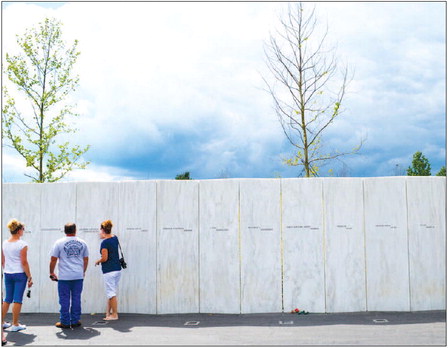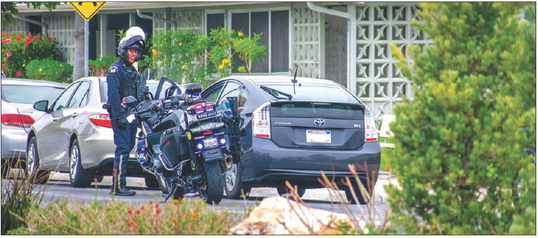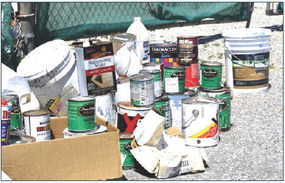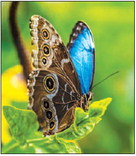A witness to history remembers that fateful day
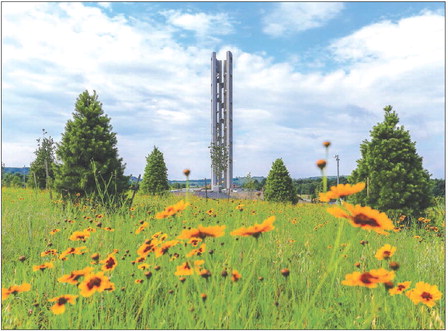

20th ANNIVERSARY
Editor’s Note: It’s been 20 years, but the day will never be forgotten. On Tuesday morning, Sept. 11, 2001, al-Qaeda terrorists hijacked four commercial airliners in an attack against the United States. These terrorists intentionally flew two jet airliners into the World Trade Center’s Twin Towers in New York City and a third aircraft into the Pentagon in Arlington, Virginia. A fourth aircraft, United Airlines Flight 93, crashed in an open field in Somerset County, Pennsylvania, killing all passengers, crew members and terrorists on board. Because of the actions of the 40 passengers and crew aboard Flight 93, the attack on the U.S. Capitol was thwarted. The four aircraft strikes killed nearly 3,000 people, the deadliest attack on American soil by a foreign entity.
LW resident Donna Gambol was a professor of journalism at Indiana University of Pennsylvania and a witness to history. Here is her first-person account of that unforgotten day and a story on the National Memorial in Shanksville, Pennsylvania (below).
by Donna Gambol LW contributor
It was a glorious fall day. The air crisp in southwestern Pennsylvania. As I drove to the university, I recall how absolutely beautiful it was. The colors just beginning to show in the hardwood forest, and visibility was unlimited. This was going to be a great day.
Moments after my arrival, the department secretary announced, “A plane just flew into the World Trade Center!” She had just received a call from another office at Indiana University of Pennsylvania, where I was about to enter the journalism classroom to teach Document Design.
“Go to the NY Times site,” I said, “they’ll have something up if it’s true.” As soon as we clicked on the link, an image of the World Trade Center with black smoke billowing from the top appeared. I went to my classroom and turned on the television monitors, changing the input from computers to network television. The images were unbelievable.
My students began to come in with lots of chatter; word was already getting out that something horrible was happening in New York. We were all glued to the screens. And then, within a few minutes of the class beginning, we watched as the second plane flew into the South Tower. Stunned, I went into the hall and encountered the department chair.
“Are we going to cancel classes?”
“No, the university president hasn’t said to cancel classes.”
“Pray to God that this is the worst thing we will ever witness in our lifetime, and you’re telling me classes go on as usual?”
“Yes, you should teach your regularly scheduled class; the curriculum doesn’t change.”
“Like hell I will.”
I went back into the classroom and said, “You’re journalism students. No design today. Today we’re going to watch this story unfold in real time; we’re going 9/11
to pay attention to the reporting.”
As we watched, I inquired of my students how many had ever been to New York City; only two had. I explained to them that the World Trade Center (WTC) buildings were 104 stories, about a quarter of a mile high.
“That’s like taking that track out there, unfolding it and putting it up on its end.”
Their eyes widened.
I drew diagrams of what the center looked like and explained to them that it was not misnamed; it was the world’s trade center.
I explained how magnificent the view was from the restaurant at the very top, where on a day like today, you literally could see for miles. I explained there were 90-plus floors of office space, and underground, a three-story shopping mall, parking facility and control rooms for the PATH trains, subway links and more.
For three years, I had lived in Jersey City, less than a mile from the Trade Center, which I could view from my window each night. Often I would watch as lights turned on and off, complete floors, all through the night, as commerce continued uninterrupted across the world.
I worked in downtown Manhattan and daily rode the PATH train one stop, under the Hudson River, to the bowels of the WTC. I rode an escalator up one platform, crossed through the shopping mall, exited the front of the building and walked four blocks to my office at Wall Street Plaza.
When visitors came, I would often take them into the city on a morning commute, have them ride up one of the 14 escalators, stop at the platform and watch as the throng of passengers filed past.
Within 10 minutes thousands of people rushed by, coming from New Jersey to work in lower Manhattan.
They marveled that the equivalent of the total population of their hometowns had just passed by.
The WTC welcomed PATH trains every three minutes during rush hour, and these were always filled to capacity.
Further, you could access five different subway lines either directly or through tunnels from the underground location. I knew that potentially thousands of people were at risk underground, let alone the estimated 40,000 who worked in the buildings.
And then the reporters announced that a plane had crashed into the Pentagon. It was astounding.
When that happened, I said, “If I were the head of the FAA, I would ground every plane right now.”
But I also told my students if that were done, it would effectively shut down the U.S. economy. Such a decision would cripple us for months. We watched and listened; the hour passed, no students left.
Dan Rather reported for CBS that the FAA ordered all aircraft grounded.
He also compared this attack to the bombing of Pearl Harbor, to which I immediately took exception.
“No,” I said, “this is not at all like Pearl Harbor. The Japanese bombed a military installation. This is a bunch of savage terror- ists who have commandeered civilian aircraft, using them and their passengers as ammunition to hit civilian targets.”
We continued to watch in horror. A few minutes past 10 a.m., they announced the crash of Flight 93.
When they said Shanksville, one of my students cried out. It was her hometown. Rushing from the classroom, she went to call her parents.
Now, the story was terrifyingly real. Shanksville, as the crow flies, was but 40 miles from where we sat.
In the next 20 minutes, we watched as the first tower collapsed. I was silent, tears filling my eyes, believing that tens of thousands perished.
Rather had no visual as the microwave links from atop the WTC were disabled.
He repeatedly said, “It’s been reported that one of the towers has collapsed, but we have no confirmation on that.”
He had no confirmation, but we had a visual. The tower had indeed collapsed. Less than 30 minutes later, the second one went down.
The class period ended. Most of the students remained. The TVs stayed on.
More students filed in from other classrooms to witness what was happening.
It was noon before the university suspended classes for the day.
The 40 engraved marble panels create the Wall of Names. A stark black wall that marks the debris field and a simple sandstone boulder are just a few of the other elements that honor the passengers and crew at the Flight 93 National Memorial.
